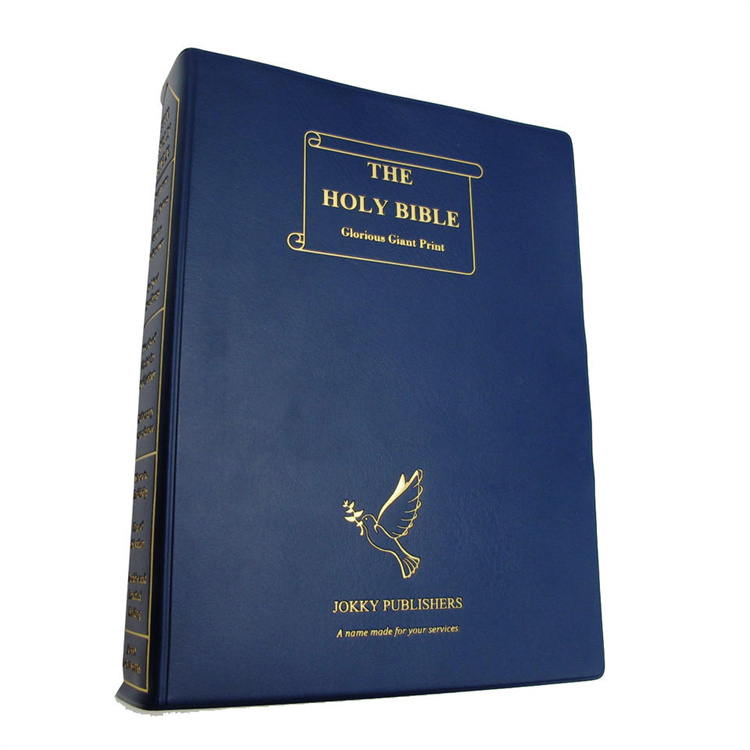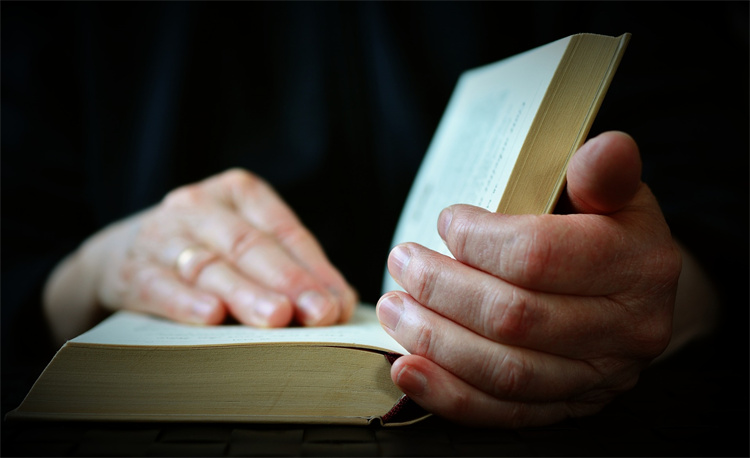Bible printing has a long and rich history, with the earliest known example of bible printing being created in the 15th century. Since then, it has evolved into a complex process that requires careful consideration when selecting the best paper for the job.

In this article, we’ll explore how bible printing works and what factors to consider when choosing paper for bible printing. As well as the benefits of custom bible printing. Finally, we'll provide some tips for selecting the right paper for your particular bible printing needs.
Overview of bible printing
Bible printing is an intricate process with a long and rich history. The earliest known example of bible printing was created in the 15th century. But since then it has evolved into a complex process that requires careful consideration when selecting the best paper for the job.
When it comes to the technical aspects of bible printing. There are a few things to consider such as type, page size, and format. Bibles can be printed in many different types of paper, from glossy to matte finish or even cardstock. The size and shape of the pages can also vary depending on how it will be used. Additionally, bibles can be printed in various formats. Such as single-sided or double-sided pages that are either portrait or landscape orientation.
In terms of market trends for bible printing, there has been a steady demand for high quality bibles over the years. As people look for ways to share their faith more easily. In addition to this, there has been an increasing demand for custom bible printing services. Due to its unique advantages over traditional bible printing methods.
Quality control is also essential when it comes to bible printing. Due to its religious significance and importance. It is important to ensure that all details are accurately represented when reproducing scriptures. So that readers have access to reliable versions of these texts.
Additionally, consistency must be maintained throughout every stage of production. So that all copies look identical and match up with any existing artwork associated with a particular version of the Bible.
Finally, there are some unique challenges associated with bible printing that need special attention. For example, accuracy is extremely important when re-producing ancient texts. Each word must match up exactly with what appears in the original source material. In order to maintain its authenticity and accuracy. Additionally, formatting issues may arise if text does not fit onto certain pages. Due to constraints on page sizes and margins which could require adjustments during production stages. In order for everything to line up correctly within each page layout.
Factors to consider when choosing paper for bible printing

When it comes to bible printing, selecting the right paper is essential. Several variables should be taken into account including weight, type, color, size and quality. The weight of the paper needs to be appropriate for its intended use. Thicker papers are more durable and thus ideal for gift bibles or those that will be used frequently. While thinner sheets are more economical and best suited for reference purposes. Additionally, matte finish papers provide a classic look while glossy ones have a modern feel. Specialty papers with unique textures can add visual interest when featuring artwork-heavy bibles too. Coated papers offer excellent print clarity while uncoated varieties have a softer appearance.
The color of the paper should also go hand in hand with the bible’s artwork and design. There's a wide range of colors from bright white to subtle ivory shades available in various finishes. Such as matte or gloss - custom colors can also be chosen if desired.
With regards to size, A4 or A5 may work better. If you need larger illustrations or photographs included whereas smaller sizes. Such as A6 may suit your needs better if you prefer a smaller format book without many illustrations or photographs inside it.
Quality is something else that needs to be factored in when choosing paper. Acid-free or archival grade sheets are optimal for books needing long-term protection against discoloration caused by time and age.
The benefits of custom bible printing

Custom bible printing offers a range of benefits that can help create a unique and personalized book. With custom printing, you have more control over the finished look of the book, as well as its durability and longevity. You can choose from a variety of paper types and colors. Such as thick or thin papers, coated or uncoated varieties, bright white or subtle ivory colors, as well as custom colors if desired.
Using custom bible printing also allows for special touches. Such as gold foil stamping and embossing to be used on the cover or text block of the book. This personalizes books for specific events or people and adds an extra level of detail and uniqueness to them. Additionally, designers can create custom layouts that make each page visually appealing. While still conveying the intended message in a clear manner.
Finally, with custom bible printing you have greater control over accuracy and formatting than with traditional methods. Experienced bible printing companies are able to ensure that all parts of the book are printed accurately. While maintaining high standards in quality control. This results in superior print clarity which makes it easier to read bibles without sacrificing visual appeal.
By taking advantage of the benefits offered by custom bible printing. You can create unique bibles that will last for years to come while also making an impression on those who view it. With careful selection of materials, precise attention to detail during layout design and accurate execution throughout production. Your custom printed bibles will become timeless keepsakes for generations to come.
Tips for selecting right paper for printing bible

When selecting the right paper for bible printing, it is important to consider multiple factors. Weight and thickness are two of the most important variables to take into account. A thicker paper will be more durable, but may also reduce legibility due to increased ink absorption. Thinner papers will be lighter and easier to handle, but may not have the same longevity as a heavier weight paper.
Additionally, opacity should be considered when selecting paper. This determines how much of the page behind shows through in a double-sided document.
In addition to weight, thickness, opacity and printer compatibility. It’s important to select a paper that matches the desired effect of the printed bible pages. For instance, if you want an elegant look for your bible pages. Then choosing a glossy finish can help achieve this. While matte finishes tend to offer a more subdued aesthetic.
Finally, it is essential that you choose an acid-free paper for your bible printing. In order ensure that it lasts over time without fading or yellowing. Due to oxidation reactions with air molecules over time. By using acid-free papers that have been specially treated against oxidation processes. You can guarantee a longer shelf life for your printed bibles compared with regular non-treated papers. That may degrade faster in comparison under similar environmental conditions.
Additionally, if there are any special printing requirements. Such as embossing or foil stamping involved in your project. Then make sure to inquire about these beforehand. So they can be accounted for in the design phase itself. Rather than as an afterthought during production stages which could lead to additional delays down the line. Due to additional setup times needed at press level by bible printers. Before producing finished copies of bibles with special effects applied on them as part of their design layout plans.
Conclusion
In conclusion, selecting the right paper for bible printing has numerous implications on how your finished product turns out. Therefore it’s important to take all these factors into account during selection process. It's also beneficial to speak with experienced printers who can help guide you through this process. So you get exactly what you want out of your custom printed Bible project.

